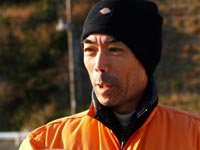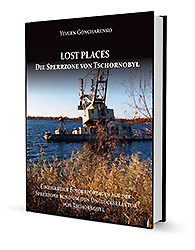 Iwaki City, December 24, 2011. At 7 AM we are loading to our vehicle and drive towards the ocean. We are going to a port town Hisanohama. Gamma background level does not exceed 0.2 µSv/h, normal level.
Iwaki City, December 24, 2011. At 7 AM we are loading to our vehicle and drive towards the ocean. We are going to a port town Hisanohama. Gamma background level does not exceed 0.2 µSv/h, normal level.
Iwaki (いわき市)
Iwaki City is one of the Fukushima Prefecture’s “core cities” in the Tohoku region. It is located on the Pacific coast. The population is about 330 thousand inhabitants. Distance from the Fukushima-Daiichi Nuclear Power Plant about 43 kilometres.
The foundation of the city dated to some 700 C.E., during the Nara period. In that time the Yamato government constructed a barrier in Iwaki against possible invasion by the Emishi (虾 夷), “barbarians of the North” as they were called by the Government of Japan at that times. By the way Nakoso Barrier (literally “Don't come over here”) is a city landmark in nowadays. The name of city Iwaki translates as “Rocky Castle”, where ruled the clan of the same name Iwaki (岩城氏) of Hitachi Province which invaded Iwaki district and settled in this territory in the 11th century. At the end of the 19th century Iwaki was transformed into an industrial city for the exploitation of the coalfield and the railroad. However, by the economic miracle of the 1960s coal fall into the background and the region has changed its priorities of coal to power plants. Notable power plants are Fukushima Daiichi and Daini, Hirono Power Station. In 20th century the region developments are carried out by subsides of electric plants and warm climate.

A few words about the administrative-territorial system of Japan in general, and the city of Iwaki in particular. In fact, there are no cities in the European sense of the meaning here. There is a conglomerate of cities, villages and towns under one name. So the city of Iwaki consists of: the cities Taira (平), Uchigō (内郷), Iwaki (磐城), Nakoso (勿来), and Jōban (常磐); the towns Yotsukura, (四倉) Tōno (遠野), Ogawa (小川) and Hisanohama (久之浜); and the five villages Yoshima (好間), Miwa (三和), Tabito (田人), Kawamae (川前) and Ōhisa (大久). Taira has been selected as place for the municipality and other administrative offices and is the centre of Iwaki city.
Iwaki – the so-called “core city” which is delegated many functions normally carried out by prefectural governments, like preschool education, health care, finance, planning and development of the city, but not as many as designated cities of Japan. In Fukushima Prefecture there are two core cities – Koriyama and Iwaki.
Iwaki takes first place as an industrial city in the Tohoku region. It is also rich in sightseeing resources; 7.64 million tourists visit the city annually. And if within Fukushima prefecture, the political centre is Fukushima city, Iwaki city is an industrial and tourist centre of the prefecture.
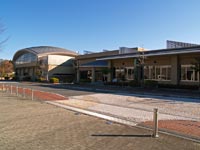 |
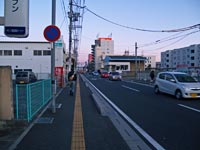 |
 |
Hisanohama (久之浜)
So the first goal of our trip today is Hisanohama. Though Hisanohama called a town, and even has an ocean port (one of four in Iwaki), administratively it is part of Iwaki city.
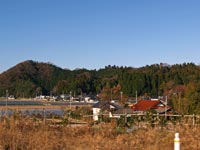 |
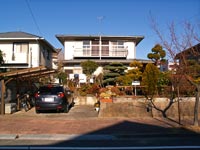 |
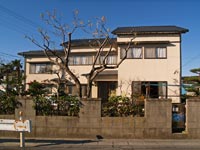 |
We drove through narrow streets of Hisanohama for a while, and finally made it to the road to the Pacific coast.
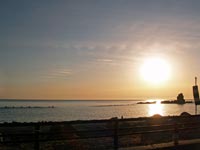 |
 |
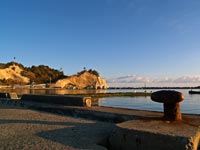 |
In the port there are rows of moored fishing boats. After the accident at the Fukushima-Daiichi Nuclear Power Plant fishermen are not allowed to fish. And this prohibition is not a formal caution of the authorities – the fish caught in Iwaki has a high content of 134Cs and 137Cs. Later, in the local Radio-Proof Centre, we will get the confirmation of this information. And if in the rice and vegetables, grown in the vicinity of Iwaki, caesium levels are within normal limit or only slightly higher than it (up to 200 Bq/kg), the local seafood has a couple of thousands of Bq/kg.
On the moorage we got into a conversation with a local fisherman Mr Shirotsugu Anoda, 52 year old. He told us with delight and sadness that this place is the best place in Japan for fishing. It was touching to see how he apologized to the fishermen of Hokkaido, but he was forced to admit that their fish is not as good as local. He sees no reason to leave or look for another job, all he had – this fishing, in this particular place. He told how the ocean tells him where is better to fish today, as he sees the tiniest signs of where exactly better to look for fish and on which depth. By his words and his eyes we could see that he really loves this place, he loves his job sincerely and wholeheartedly.
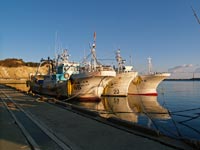 |
 |
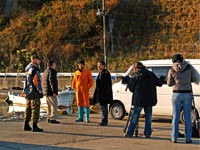 |
He does not complain, just quietly hoping that sooner or later, he yet be able to put to ocean again. And he comes every day to his boat, do some repairs, refresh the paint, scour... and waiting...
When we asked him if he get enough monetary compensation from the government for loss of his business and asked him to clarify what brings more profit to him – fish selling or indemnity money receiving; at first he did not even understand the question, then he was a little surprised, and when he answered, I felt ashamed that we have asked such question.
– After all, fishing is not anything hundred-per-cent: sometimes there is a big catch, and sometimes it is possible to do not catch anything for a few days, besides such work depends on weather, storms, tsunamis. But it does not matter even if the compensation is more than earnings. It is not a matter of money. I started fishing here when I was 15, with my father. My whole life is in this place. How can I measure it with money?
It was evident that he was embarrassed to explain to us such simple things.
We say goodbye to Shirotsugu Anoda and go to the Radio-Proof Centre of Iwaki.
| Iwaki (いわき市). Fukushima Prefecture. Day Three< Prev | Next >The Mayor of the Town of Miharu (三春町). Fukushima Prefecture. The Second Day |
|---|








